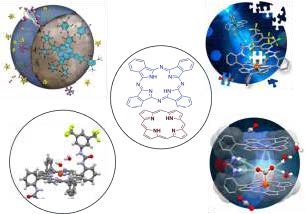
- Cet évènement est passé.
Conférence Pr Ally Aukaulo
24 janvier de 11:00 - 12:00

Pr Ally Aukaulo
ICMMO, Universite Paris-Saclay, I2BC CEA Saclay
E-mail: Ally.aukauloo@universite-paris-saclay.fr
Modules for Artificial Photosynthesis
Historically, We develop metalloporphyrins and metallo phthalocyanins to replicate the different events in natural photosynthesis:
- Light induced electron transfer models of P680-TyrZ, we have developed a fused imidazole-phenol with a phthalocyanine as a model for the latest discovery of chlorophyll f driven photosynthesis ay 727 nm.
- If I have time I will discuss the development of organic semiconductors for the water splitting reaction.
- For the CO2 reduction, we build on results in the literature to enhance the catalytic efficiency of metallophyrins and metallophthalocyanines by embarking chemical functions to develop multipoint hydrogen bonds, electrostatic interaction and designed bimetallic complexes.
- Porphyrins are known to stabilize highly oxidized metal oxo species. We have designed mononuclear and dinuclear metalloporphyrins that can activate and oxidize water.

Scheme : Metallophthalocyanines and metalloporphyrins
References
[1] J. Follana-Berná et al. Angewandte Chemie International Edition, 2021, 60, 12284-12288
[2] J. Patel et al. Chem. Sci., 2020, DOI: 10.1039/D0SC02122A
[3] X. Yuan et al. Small, 2024, 10.1002/smll.202407364
[2] P. Gotico et al. Angewandte Chemie International Edition, 2019, 58, 4504-4509
[3] P. Gotico et al. Angewandte Chemie International Edition, 2020, 59, 22451-22455.
[4] C. Zhang et al. Angewandte Chemie International Edition, 2023, 62, e20221466
